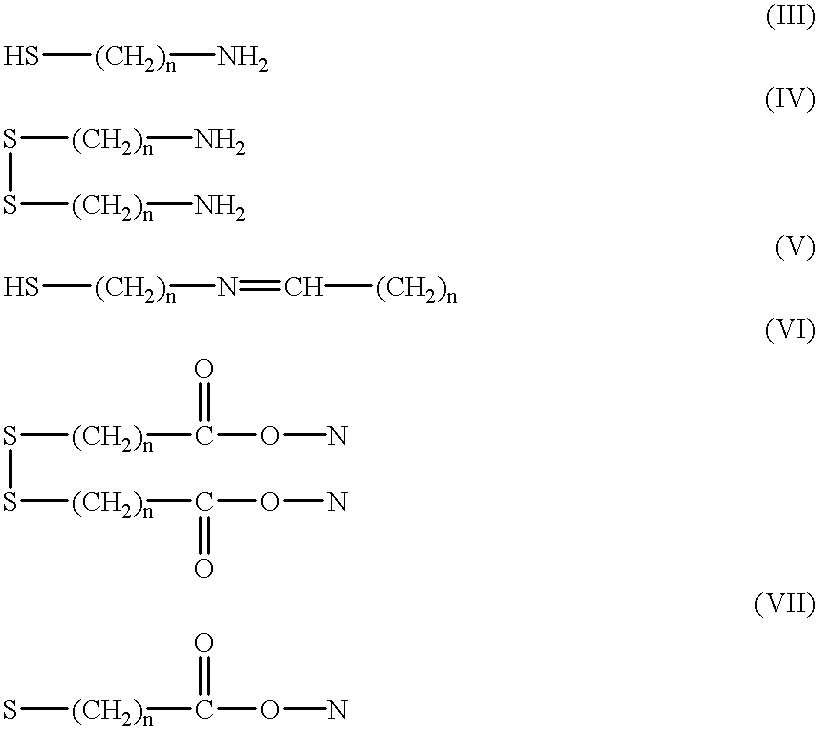Determination of an analyte in a liquid medium
- Summary
- Abstract
- Description
- Claims
- Application Information
AI Technical Summary
Benefits of technology
Problems solved by technology
Method used
Image
Examples
Embodiment Construction
The invention will now be further illustrated in the following examples. In these examples the electrodes were covered with a monolayer comprising the antigen dinitrophenyl (DNP) to which were then bound anti-DNP antibodies. It will be appreciated that this is an example only of a myriad of antigens which can be immobilized on the surface of the electrode. Furthermore, it is clear that the antibody-antigen recognition pair is also an example of a variety of other such pairs which can be utilized in accordance with the invention, one of which is immobilized on the electrode and the other is the assayed analyte.
The same above general statement is true also with respect to all the other specific reagents, enzymes, catalysts, redox molecules, etc. shown in the specific embodiments below.
1. ELECTRODE CHARACTERIZATION AND ELECTROCHEMICAL SET-UP
A gold electrode (0.5 mm diameter Au wire of geometrical area ca. 0.2 cm.sup.2) was used for all modifications and measurements. A cyclic voltammog...
PUM
| Property | Measurement | Unit |
|---|---|---|
| Time | aaaaa | aaaaa |
| Concentration | aaaaa | aaaaa |
Abstract
Description
Claims
Application Information
 Login to View More
Login to View More - R&D
- Intellectual Property
- Life Sciences
- Materials
- Tech Scout
- Unparalleled Data Quality
- Higher Quality Content
- 60% Fewer Hallucinations
Browse by: Latest US Patents, China's latest patents, Technical Efficacy Thesaurus, Application Domain, Technology Topic, Popular Technical Reports.
© 2025 PatSnap. All rights reserved.Legal|Privacy policy|Modern Slavery Act Transparency Statement|Sitemap|About US| Contact US: help@patsnap.com



